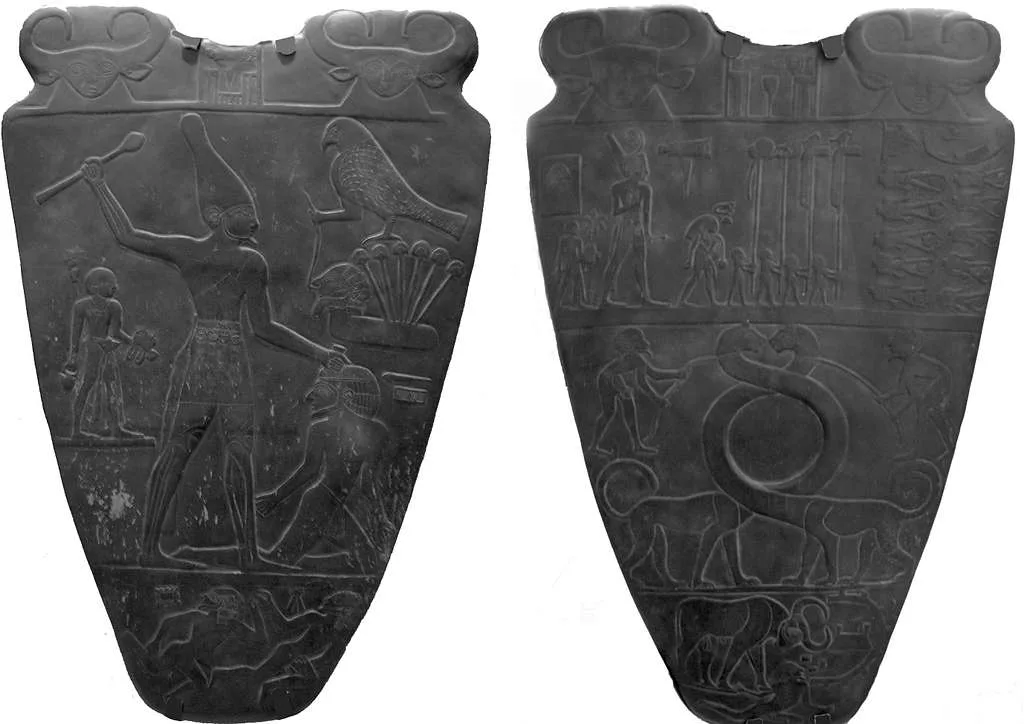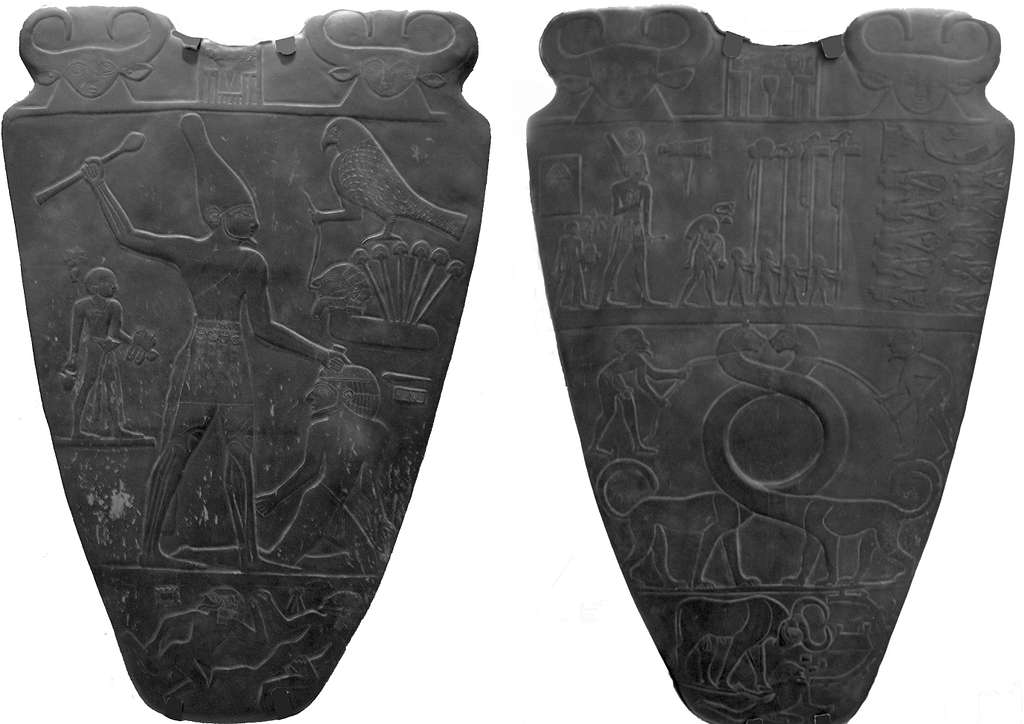The Most Significant Artifact that Most People Miss in the Egyptian Museum
The old Egyptian Museum in downtown Cairo’s Tahrir Square has been the home to Egypt’s most prized archaeological treasures for more than a century. Until recently, its vast open halls resembled more of a warehouse than one of the world’s most important museums, with tens of thousands of artifacts crammed into every nook and corner of the two-story, late-19th century pink building. Now that the Ministry of Antiquities has started moving many pieces of lesser significance over to the new Grand Egyptian Museum in anticipation of it’s grand opening in 2024 (check out this site for more on that), it’s a little easier to meander through the [still-voluminous] collections of ancient artifacts throughout the museum.
Many priceless treasures that are thousands of years old still fill the walls and halls of the old Egyptian Museum, but few carry the weight and historical significance of the Narmer Palette. This ancient ceremonial slab offers an invaluable glimpse into the formative years of ancient Egyptian civilization, telling a tale of power, unification, and artistic innovation. Although normal visitors would likely never be able to tell it apart from the thousands of other artifacts around it, true museum enthusiasts will appreciate the depth of story concealed within the palette’s intricate carvings.
Historical Context
The Narmer Palette dates back to approximately 3100 B.C., during the Early Dynastic Period. This was a crucial era for Egypt, marking the transition from the Predynastic Period to the Pharaonic age. Historians and archaeologists postulate that Narmer, the figure prominently showcased on the palette, was potentially the first pharaoh to unify Upper and Lower Egypt. This idea of unity, the convergence of two separate entities into one powerful and centralized state, is a theme mirrored within the palette’s design and depictions.
Discovery of the Palette
Unearthed in 1898 by British archaeologist James E. Quibell in the Main Deposit at the Temple of Horus in Hierakonpolis, the Narmer Palette was immediately recognized for its significance. Hierakonpolis, known in ancient times as Nekhen, was an influential religious and political center during the late Predynastic Period, making it an apt location for the discovery of such a significant artifact. The palette was found alongside other ceremonial objects, suggesting that they were deliberately deposited as a form of dedication or offering.
Description and Interpretation
Measuring 64 cm in height and fashioned from a single piece of grey-green siltstone, the Narmer Palette is shaped like a traditional cosmetic palette, which would typically be used to grind and mix cosmetics. However, due to its size and the intricacy of its reliefs, the Narmer Palette was undoubtedly ceremonial rather than functional.
The palette features intricate carvings on both sides. On the front, a large central figure, identified as Narmer, is depicted wearing the white crown of Upper Egypt, symbolizing his rule over the southern kingdom. He is shown in the act of smiting an enemy, a classic pose signifying power and victory in ancient Egyptian art. Just behind him, a smaller figure, likely a high-ranking official or vizier, holds a broom, potentially suggesting the “sweeping away” of enemies or old powers.
On the reverse side, Narmer is depicted wearing the red crown of Lower Egypt, indicating his dominion over the northern lands. Here, two long-necked, intertwined beasts dominate the center, perhaps symbolizing the intertwined fates of Upper and Lower Egypt. At the bottom, two catfish (or “nar” in ancient Egyptian) flank a chisel, forming a hieroglyph that reads “Narmer,” giving the palette its name.
Significance in the Annals of History
Beyond its artistic mastery, the Narmer Palette is crucial for several reasons:
Historical Record: It provides a tangible record of the events surrounding the early formation of a unified Egyptian state. Whether the scenes are symbolic or representative of real events, they speak to the political landscape of the time.
Evolution of Hieroglyphics: The inscriptions on the palette represent some of the earliest forms of hieroglyphic writing, showcasing the evolving system of record-keeping and communication in ancient Egypt.
Artistic Precursor: The palette’s design, including the use of size to indicate importance and the classic smiting pose, would set precedents for Egyptian art for millennia.
Today, the Narmer Palette is housed in an elevated glass case immediately in front of the main entrance to the old Egyptian Museum in Cairo. For the passionate museum-goer, it stands not just as a piece of art, but as a historical document — a testament to the power, innovation, and ingenuity of ancient Egypt at the cusp of its emergence as one of the world’s great civilizations.
The post The Most Significant Artifact that Most People Miss in the Egyptian Museum appeared first on EgyptTravelBlog.com.
Halber Tag Schnorcheln (privat) *Exklusiv
Quad 3 Stunden (vor- oder nachmittags)








Lope Lope
The article highlights the significance of an artifact in the Egyptian Museum that is often overlooked by visitors. The museum, known for its vast collection of archaeological treasures, has been a home to Egypt’s history for over a century. Despite its importance, the artifact discussed in the article tends to go unnoticed due to the overwhelming number of items on display. This article serves as a reminder to explore and appreciate the lesser-known gems in museums, as they can hold great historical and cultural value.
November 12, 2023 at 9:11 p.m.
Coffee
The Egyptian Museum in downtown Cairo is known for housing Egypt’s most valuable archaeological treasures. However, due to its vast collection, many significant artifacts often go unnoticed by visitors. One such artifact, highlighted in the article, is the Narmer Palette. This ancient artifact holds immense historical and cultural significance, yet it is often overlooked. It serves as a reminder of the rich history and heritage that can be found within the walls of the Egyptian Museum.
November 18, 2023 at 1:56 p.m.